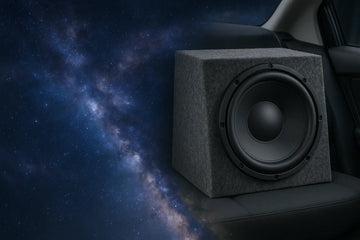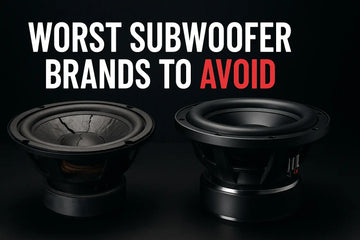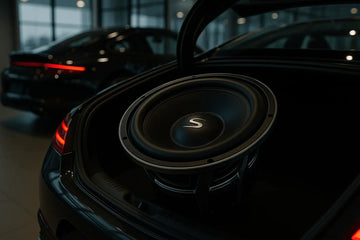Key Highlights
Choosing the right subwoofer enclosure is crucial for achieving the best sound quality in your car audio system.
- There are different types of subwoofer enclosures, including sealed, ported, and bandpass, each with its own pros and cons.
- Factors to consider when choosing a subwoofer enclosure include vehicle space, subwoofer size, compatibility, sound quality expectations, and durability.
- A step-by-step guide to selecting your car subwoofer enclosure includes determining your audio system's goals, measuring your available space, choosing between sealed or ported enclosures, assessing the enclosure's material quality, and finalizing the installation process.
- To maximize the performance of your subwoofer enclosure, you can tune it for optimal sound, maintain it properly for longevity, and consider upgrading it for enhanced sound.
- Common mistakes to avoid when choosing a subwoofer enclosure include choosing the wrong type, ignoring vehicle compatibility, and overlooking enclosure material quality.
Introduction
Choosing the right subwoofer enclosure is essential for anyone looking to enhance their car audio system. A subwoofer enclosure, also known as a subwoofer box, is critical in producing deep and powerful bass. It enhances the overall sound quality and protects the subwoofer from damage.
Understanding the different types of subwoofer enclosures and choosing the right one can significantly impact your car audio experience. This blog will guide you through selecting the perfect subwoofer enclosure for your car.
Understanding Subwoofer Enclosures
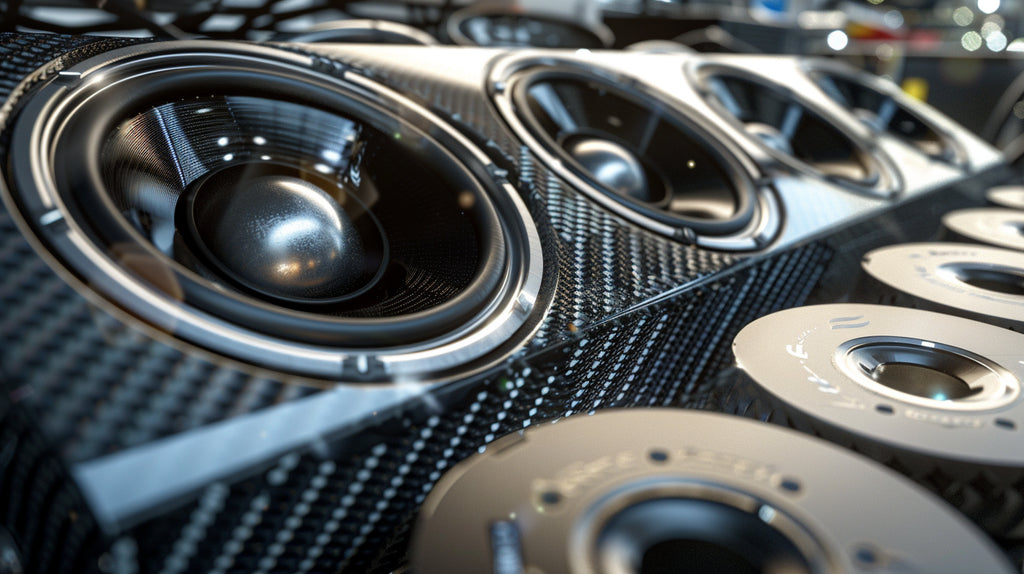
Before diving into the selection process, it's essential to understand what subwoofer enclosures are and how they affect sound quality. A subwoofer enclosure is a specially designed box that houses the subwoofer. It plays a crucial role in controlling air movement around the subwoofer, influencing its sound output. One important factor to consider when choosing a subwoofer enclosure is the subwoofer's voice coil design, such as a dual voice coil design that can handle more power and deliver more bass, as seen in the R2-2X12 loaded enclosure.
There are three types of subwoofer enclosures: sealed, ported (vented), and bandpass. A sealed enclosure is airtight and provides precise and accurate bass reproduction. A ported enclosure has a vent or port that allows air to escape, resulting in a louder and more boomy bass. A bandpass enclosure combines the characteristics of both sealed and ported enclosures, emphasizing specific frequency ranges for maximum impact in your dream system.
The Importance of Choosing the Right Enclosure
Choosing the right subwoofer enclosure is crucial for achieving optimal sound quality in your car audio system. The enclosure acts as a critical component in the subwoofer's overall performance, affecting its frequency response, power handling, and efficiency.
A well-matched enclosure ensures the subwoofer operates within its ideal parameters, resulting in better sound reproduction and reduced distortion. It also helps achieve a perfect fit in your vehicle, maximizing the available space and enhancing the overall aesthetic appeal.
By selecting the right enclosure for your subwoofer, you can expect an improved bass response, enhanced sound clarity, and a more immersive listening experience.
Types of Subwoofer Enclosures Explained
Three primary types of subwoofer enclosures are sealed, ported, and bandpass. Each type has its own characteristics and is suitable for different sound preferences and vehicle setups.
A sealed enclosure, a sealed box, is airtight and provides tight and accurate bass reproduction. It is ideal for those prioritizing sound quality and wanting a precise and controlled bass response. Sealed enc are also more forgiving regarding subwoofer placement within the vehicle.
On the other hand, a ported enclosure, also known as a vented enclosure, has a vent or port that allows air to escape from the box. This vented design enhances low-frequency output, resulting in a louder and more boomy bass. Ported enclosures suit those who prefer a more impactful and dynamic bass response.
Lastly, a bandpass enclosure combines elements of both sealed and ported enclosures. It has two chambers, one sealed and one ported. The sealed chamber isolates the woofer's rear wave, while the ported chamber allows the front wave to escape. This design emphasizes specific frequency ranges and can provide a more pronounced and focused bass.
Sealed vs. Ported vs. Bandpass: Pros and Cons
When deciding between sealed, ported, and bandpass enclosures, it's essential to consider the pros and cons of each type. Here are some key points to help you make an informed decision:
Sealed Enclosures:
- Pros: Accurate and precise bass reproduction, excellent sound quality, compact design, ideal for small to medium-sized vehicles.
- Cons: Lower overall output compared to ported enclosures, requires more power to produce the same volume as ported enclosures.
Ported Enclosures:
- Pros: Louder and more boomy bass, increased low-frequency output, efficient use of amplifier power, suitable for larger vehicles.
- Cons: Less precise bass than sealed enclosures, larger size, more sensitive to subwoofer specifications.
Bandpass Enclosures:
- Pros: Enhanced bass response in specific frequency ranges, increased output, and potential for higher sound pressure levels (SPL).
- Cons: Limited frequency response, less accurate bass reproduction, more complex design and tuning.
Choosing between sealed, ported, or bandpass enclosures depends on your desired sound quality, space limitations, and vehicle setup.
Factors to Consider When Choosing a Subwoofer Enclosure
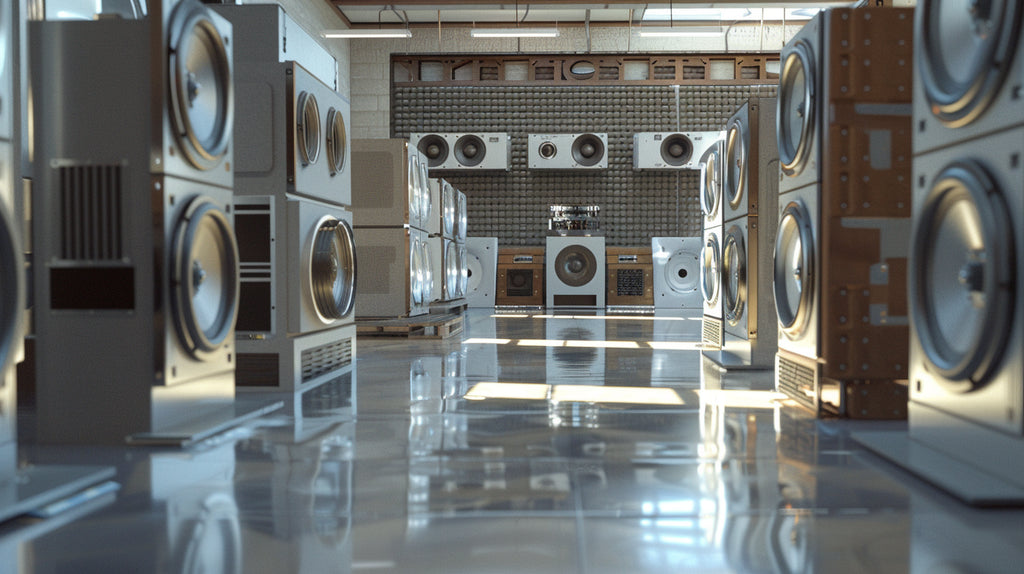
Several factors must be considered to ensure the best fit and performance when selecting a subwoofer enclosure. These factors include:
- Vehicle Space: Consider the available space in your vehicle, including trunk or cargo area dimensions, to determine the size and type of enclosure that will fit comfortably.
- Subwoofer Size: Choose an enclosure compatible with your subwoofer's size and specifications to ensure proper fitment and optimal performance.
- Compatibility: Ensure the enclosure is compatible with your subwoofer's power handling, impedance, and mounting requirements.
Considering these factors, you can select an enclosure that maximizes your subwoofer's potential and delivers the desired sound quality.
Vehicle Space and Subwoofer Size
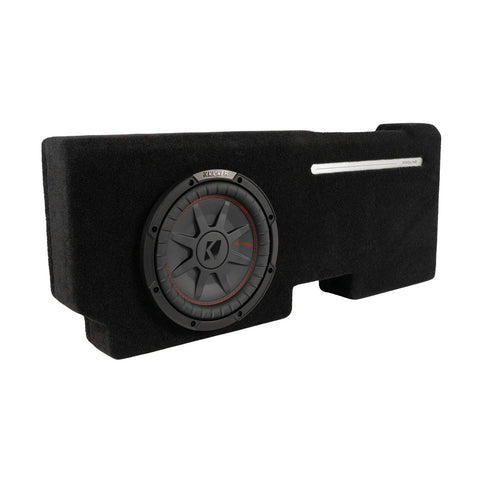
The available space in your vehicle plays a crucial role in determining the size and type of subwoofer enclosure you can accommodate. It's important to measure the dimensions of your trunk or cargo area to ensure a proper fit.
When selecting an enclosure, consider the following:
- Trunk/Cargo Area Dimensions: Measure the available space's width, height, and depth to determine the maximum enclosure dimensions that will fit comfortably.
- Subwoofer Size: Choose an enclosure that matches the size of your subwoofer. Common sizes include 8-inch, 10-inch, 12-inch, and 15-inch subwoofers.
- Enclosure Type: Based on the available space, determine whether a sealed, ported, or bandpass enclosure will best fit your vehicle.
By taking accurate measurements and selecting the right-sized enclosure, you can seamlessly integrate your subwoofer into your vehicle's audio system.
Sound Quality Expectations
When choosing a subwoofer enclosure, it's important to consider your sound quality expectations. Different enclosure types offer varying sound characteristics, and understanding your preferences will help you make the right choice.
- Sealed Enclosures: Sealed enclosures provide precise and accurate bass reproduction, making them ideal for those prioritizing sound quality and a balanced audio experience.
- Ported Enclosures: Ported enclosures offer a louder and more boomy bass response, appealing to those who prefer a more impactful and dynamic sound.
- Bandpass Enclosures: Bandpass enclosures emphasize specific frequency ranges, providing an extreme sound experience with enhanced bass impact.
Consider your taste and the type of sound system you desire when selecting a subwoofer enclosure to ensure it aligns with your sound quality expectations.
Compatibility with Your Subwoofer
To achieve optimal performance, choosing a subwoofer enclosure compatible with your subwoofer's specifications is important. Here are a few key compatibility factors to consider:
- Specific Subwoofer Enclosures: Some subwoofers are designed to work best with specific enclosure types. Check the manufacturer's specifications or recommendations for your subwoofer model.
- RMS Power Handling: Ensure the enclosure can handle your subwoofer's RMS power rating. Using an enclosure that cannot handle the power could damage the subwoofer or poor performance.
- Impedance: Match the enclosure's impedance to your subwoofer's specified impedance (e.g., 2 ohms, 4 ohms) for optimal electrical compatibility.
By selecting a compatible subwoofer enclosure, you can ensure that your subwoofer operates at its full potential and delivers the best possible sound quality.
Durability and Material Considerations
When choosing a subwoofer enclosure, durability, and material quality are important considerations. A well-built enclosure will protect your subwoofer and contribute to the overall sound quality. Here are some key points to consider:
- Premium Materials: Look for enclosures made from high-quality materials, such as MDF (medium-density fiberboard), known for its strength and resonance-dampening properties.
- Thick Triple Baffle Design: A thick triple baffle design adds strength and rigidity to the enclosure, minimizing vibrations and enhancing sound quality.
- Enclosure Finish: Consider enclosures with a durable and visually appealing finish, such as a carpet or vinyl covering, to ensure longevity and enhance aesthetics.
You can enjoy long-lasting durability and improved sound performance by choosing an enclosure with premium materials and solid construction.
Step-by-Step Guide to Selecting Your Car Subwoofer Enclosure
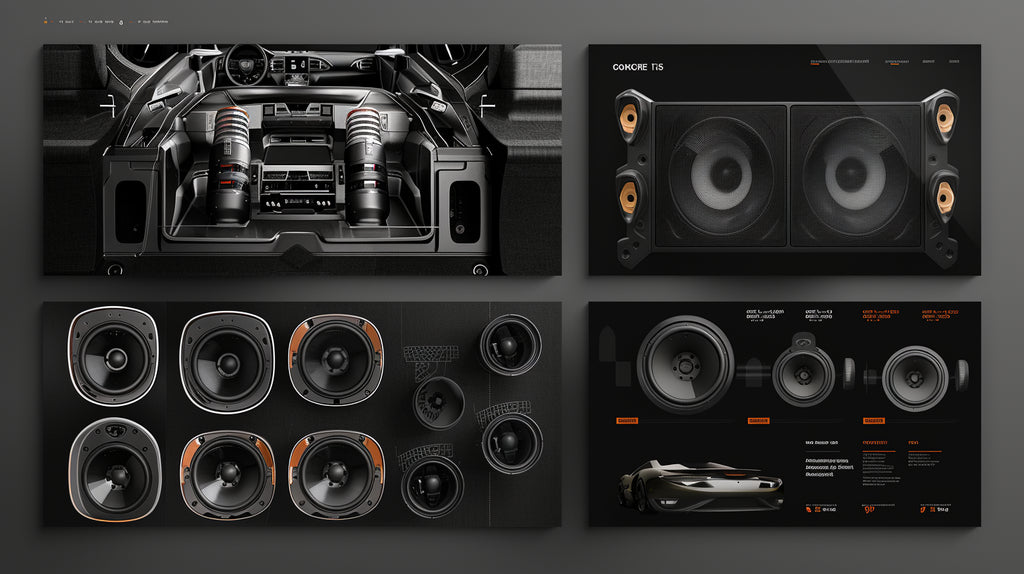
Now that you understand subwoofer enclosures well and the factors to consider let's walk through a step-by-step guide to selecting the perfect car subwoofer enclosure. Following these steps ensures that your subwoofer enclosure aligns with your audio goals and provides the best sound experience possible. Don't forget to consider important factors such as size, material, and compatibility with your car's audio system. With top brands like Proline X and Atrend offering various options for car subwoofer boxes and enclosures, you'll surely find the perfect fit for your vehicle.
Determine Your Audio System’s Goals
Before selecting a subwoofer enclosure, defining your audio system's goals is important. Consider the following:
- Sound Quality: Are you looking for extreme sound quality and accuracy?
- Bass Impact: Do you want powerful and deep bass?
- SPL (Sound Pressure Level): Are you aiming for high volume levels and bass output?
You can choose an enclosure that aligns with your desired sound experience by clarifying your goals. Consider consulting with car audio experts or researching top brands such as JL Audio or Rockford Fosgate to find the best subwoofer enclosure for your specific audio goals.
Measure Your Available Space
Once you've defined your audio goals, measure the available space in your vehicle to determine the maximum dimensions of the subwoofer enclosure that will fit comfortably. Consider the following:
- Trunk or Cargo Area: Measure the width, height, and depth of the trunk or cargo area where the subwoofer enclosure will be placed.
Sub Box Dimensions: Review the dimensions of the subwoofer enclosure options available and ensure they fit within your measured space.
- Perfect Fit: Choosing an enclosure that fits perfectly ensures proper installation and optimal performance.
By taking accurate measurements and choosing an enclosure that fits your available space, you can achieve a seamless integration and enhance the overall aesthetic appeal.
Choose Between Sealed or Ported Enclosures
Based on your audio goals and available space, decide whether a sealed or ported enclosure best fits your needs. Consider the following:
- Sealed Enclosure: A sealed enclosure may be the best choice if you prioritize sound quality and accuracy. It provides precise bass reproduction and is suitable for smaller vehicles or those seeking a balanced sound experience.
- Ported Enclosure: A ported enclosure may be ideal if you prefer a louder and more boomy bass response. It offers increased low-frequency output and is suitable for larger vehicles or those who want a more dynamic sound.
By understanding the characteristics of each enclosure type, you can make an informed decision that aligns with your sound preferences.
Assess the Enclosure's Material Quality
When selecting a subwoofer enclosure, assessing the material quality is important. Look for enclosures made from premium materials and consider the following:
- Premium Materials: Choose enclosures made from high-quality materials such as MDF (medium-density fiberboard) or HD (high-density) birch plywood. These materials offer excellent strength and resonance-dampening properties.
- Solid Construction: Ensure the enclosure has a solid and well-built construction to minimize vibrations and enhance sound quality.
- Durable Finish: Look for durable and visually appealing enclosures, such as a carpet or vinyl covering, to ensure longevity and enhance aesthetics.
By considering the material quality and construction of the enclosure, you can select a product that will provide excellent performance and durability.
Installation Tips for Subwoofer Enclosures
Installing a subwoofer enclosure requires careful attention to detail to ensure proper function and performance. Here are some installation tips to consider:
Preparing for Installation
Before installing, gather the necessary tools and prepare your vehicle. Here's what you'll need:
- Tools Needed: Screwdriver, wire stripper, wire crimper, electrical tape, drill (if necessary), and wiring kit.
- Prepare the Vehicle: Clear out any objects or debris in your vehicle's trunk or cargo space from the installation area.
By having the necessary tools and preparing your vehicle, you can streamline the installation process and ensure a smooth installation.
Tools You Will Need
To install a subwoofer enclosure, you'll need a few essential tools. Here are the tools you'll likely need:
- Screwdriver: A screwdriver is essential for removing panels or securing screws during the installation process.
- Wiring Kit: A wiring kit includes essential components for connecting the subwoofer to the amplifier and power source.
- Amplifier: An amplifier provides the power to drive the subwoofer and enhance its performance.
- Wire Stripper and Crimper: These tools are necessary for cutting and crimping wires during installation.
These readily available tools will make the installation process more convenient and efficient.
Securing the Subwoofer in the Enclosure
Properly securing the subwoofer in the enclosure is crucial for optimal performance and longevity. Follow these steps:
- Place the Subwoofer: Carefully position the subwoofer in the enclosure, ensuring that it aligns with the mounting holes or terminals.
- Secure the Subwoofer: Attach the Subwoofer to the enclosure using screws or mounting brackets provided with the enclosure.
- Check Terminal Connections: Double-check the terminal connections to ensure they are secure and properly connected.
Securing the subwoofer in the enclosure can prevent unnecessary vibrations or damage during operation.
Finalizing the Installation Process
Once the subwoofer is securely installed in the enclosure, follow these final steps to complete the installation process:
- Connect the Wiring: Use the wiring kit to connect the subwoofer to the amplifier and power source, following the manufacturer's instructions.
- Set the Final Impedance: Ensure that the subwoofer's final impedance matches the amplifier's impedance capabilities.
- Test the Sound System: Power on the sound system and test the subwoofer to ensure it functions properly and produces the desired sound.
By completing these steps, you can finalize the installation process and enjoy the enhanced sound experience provided by your new subwoofer enclosure.
Maximizing the Performance of Your Subwoofer Enclosure

To get the most out of your subwoofer enclosure, consider the following tips for maximizing its performance:
Tuning Your Subwoofer for Optimal Sound
Tuning your subwoofer enclosure is essential for achieving optimal sound quality and performance. Consider the following tips:
- Adjust the Subwoofer's Phase: Experiment with the subwoofer's phase settings to find the best alignment with the rest of your audio system.
- Fine-tune the Crossover: Adjust the crossover settings to ensure a seamless transition between the subwoofer and other speakers, avoiding frequency overlap.
- Set the Gain Properly: Calibrate the gain settings on your amplifier to match the subwoofer's power requirements and prevent distortion or clipping.
- Experiment and Listen: Take the time to experiment with different settings and listen carefully to identify the optimal sound quality and bass response.
By tuning your subwoofer enclosure, you can fine-tune its performance and achieve the desired sound quality.
Maintenance Tips for Longevity
Regular maintenance is essential for ensuring your subwoofer enclosure's longevity and optimal performance. Consider the following tips:
- Clean the Enclosure: Regularly clean the enclosure's exterior using a soft cloth or brush to remove dust and grime.
- Inspect for Wear: Periodically inspect the enclosure for any signs of wear, such as loose screws, damaged terminals, or frayed wiring.
- Protect from Moisture: Avoid exposing the enclosure to excessive moisture or humidity, as it can damage the materials and affect sound quality.
- Store Properly: If the enclosure needs to be removed or stored temporarily, ensure it is stored in a clean, dry, and secure location.
By following these maintenance tips, you can extend the lifespan of your subwoofer enclosure and maintain optimal sound quality.
Upgrading Your Enclosure for Enhanced Sound
If you want to enhance your subwoofer system's sound performance, consider upgrading your enclosure. Here are a few options to explore:
- High-Performance Enclosures: Upgrade to a high-performance enclosure for extreme sound output and enhanced bass response.
- Custom Enclosures: Explore the option of custom-built enclosures tailored to your specific audio goals and vehicle setup.
- Dual Subwoofer Setups: Consider upgrading to a dual setup for increased bass impact and overall sound performance.
By upgrading your subwoofer enclosure, you can take your car audio experience to the next level and achieve the sound system of your dreams.
Common Mistakes to Avoid
When choosing a subwoofer enclosure, it's important to be aware of common mistakes that can compromise sound quality and overall performance. Here are a few mistakes to avoid:
Choosing the Wrong Type of Enclosure
One common mistake is choosing the wrong type of enclosure for your audio goals and vehicle setup. For example:
- Choosing a ported enclosure when prioritizing sound quality and accuracy may result in a boomy or unbalanced bass.
- Opting for a sealed box when you desire a more impactful bass response may lead to a lack of volume or low-frequency output.
To avoid this mistake, carefully consider your sound preferences and select the appropriate enclosure type that best aligns with your goals.
Ignoring Vehicle Compatibility
Ignoring vehicle compatibility is another common mistake. Each vehicle has different space limitations and acoustic properties that can affect sound quality. Avoid this mistake by:
- Measuring the available space in your vehicle's trunk or cargo area and selecting an enclosure that fits those dimensions.
- Considering the overall size and weight of the enclosure, ensure it doesn't interfere with other components in your car audio system.
- Research vehicle-specific fitment options or consult with experts who can recommend enclosures that are compatible with your car.
Ensuring compatibility between your vehicle and the chosen subwoofer enclosure is essential for achieving the best sound quality and performance.
Overlooking Enclosure Material Quality
Another common mistake is overlooking the quality of the enclosure's materials. Poor material quality can negatively impact durability and sound quality. Avoid this mistake by:
- Choosing enclosures made from high-quality materials such as MDF (medium-density fiberboard), which offers excellent strength and resonance-dampening properties.
- Ensuring the enclosure has a solid construction and thick baffle design to minimize vibrations and enhance sound performance.
- Considering the enclosure's durability features, such as a durable finish or reinforcements to prevent damage during transportation or installation.
You can ensure long-lasting durability and optimal sound performance by prioritizing enclosure material quality.
Conclusion
Choosing the right subwoofer enclosure for your car is crucial for optimal sound performance. Understanding the different types - sealed, ported, and bandpass - and considering factors like available space, sound quality expectations, and durability are key to making the right decision. Follow a step-by-step guide to select the perfect enclosure for your audio system goals. Installation should be meticulous, ensuring a secure fit. Maximize performance by tuning your subwoofer and maintaining it regularly. Avoid common mistakes such as choosing the wrong type or overlooking material quality. Following these tips and guidelines can significantly enhance your car audio experience.
Frequently Asked Questions
Can I switch enclosure types if I’m not satisfied with the sound?
Yes, it is possible to switch enclosure types if you are not satisfied with the sound. However, keep in mind that each enclosure type produces different sound characteristics. Switching from a sealed to a ported enclosure, for example, may result in a different bass response and overall sound quality.
How often should I inspect my subwoofer enclosure for wear?
Inspecting your subwoofer enclosure periodically, at least every few months, for any signs of wear or damage is recommended. Check for loose screws, damaged terminals, or frayed wiring. Regular maintenance and inspection can help maintain optimal performance and extend the lifespan of your enclosure.
What’s the best way to clean a subwoofer enclosure?
To clean a subwoofer enclosure, use a soft cloth or brush to remove dust and grime from the exterior. Avoid harsh chemicals or abrasive materials that damage the enclosure's finish. Regular cleaning and proper maintenance will help ensure the durability and longevity of your enclosure.



